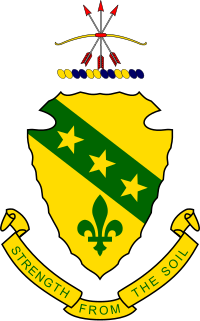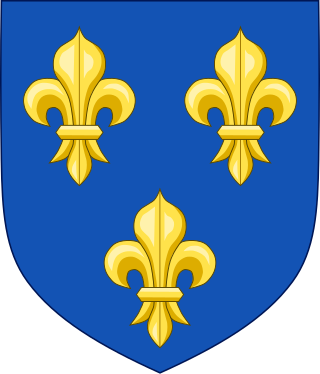
The fleur-de-lis, also spelled fleur-de-lys, is a common heraldic charge in the shape of a lily. Most notably, the fleur-de-lis is depicted on the traditional coat of arms of France that was used from the High Middle Ages until the French Revolution in 1792, and then again in brief periods in the 19th century. This design still represents France and the House of Bourbon in the form of marshalling in the arms of Spain, Quebec and Canada, for example.

The coat of arms of Canada, also known as the Royal Coat of Arms of Canada or, formally, as the Arms of His Majesty the King in Right of Canada, is the arms of dominion of the Canadian monarch and, thus, also the official coat of arms of Canada. In use since 1921, it is closely modelled after the royal coat of arms of the United Kingdom, with French and distinctive Canadian elements replacing or added to those derived from the British version.

The first coat of arms of Montreal was designed by Jacques Viger, the first mayor of Montreal, and adopted in 1833 by the city councillors. Modifications were made some one hundred five years later and adopted on 21 March 1938, and again on 13 September 2017, resulting in the version currently in use. The coat of arms was the only city emblem representing Montreal until 1981, when a stylized logo was developed for common daily use, reserving the coat of arms for ceremonial occasions.

The coat of arms of Alabama depicts a shield upon which is carried the symbols of the five states which have at various times held sovereignty over a part or the whole of what is now Alabama. These are the ancient coat of arms of France, the ancient coat of arms of Crown of Castile for Spain, the modern Union Jack of the United Kingdom and the battle flag of the Confederate States. On an escutcheon of pretence is borne the shield of the United States. The crest of the coat represents a ship which brought the French colonists who established the first permanent European settlements in the territory. Below is the state motto: Audemus jura nostra defendere, meaning "We dare defend our rights."

The coat of arms of Kirklees Metropolitan Borough Council was granted on 24 June 1974. This was just a few months after the district of Kirklees was created as part of the new metropolitan county of West Yorkshire. It is rarely used by the Council who, until 2007, preferred to use a logo that is based upon the arms.
The 113th Field Artillery Regiment is a field artillery regiment of the United States Army National Guard.

The 252nd Armor Regiment is an armored regiment of the North Carolina Army National Guard, part of the 30th Armored Brigade Combat Team, which in turn is part of the 29th Infantry Division.
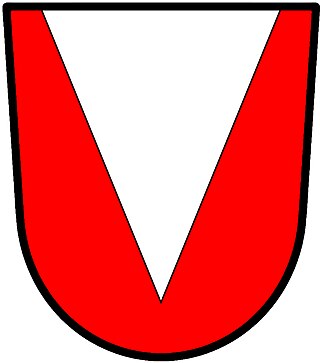
In heraldry, a pile is a charge usually counted as one of the ordinaries. It consists of a wedge emerging from the upper edge of the shield and converging to a point near the base. If it touches the base, it is blazoned throughout.
The 141st Infantry Regiment is an infantry regiment in the United States Army. The lineage of the 141st includes units tracing origins to the Texas Revolution, such as Company A, First Texas, 1836, and other infantry companies of the First Texas formed in the 1870s and 1880s.
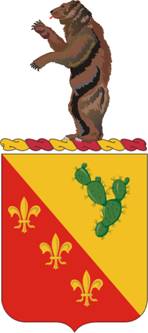
The 129th Field Artillery Regiment is a regiment of the Field Artillery Branch of the United States Army, part of the Missouri Army National Guard. The 1st Battalion is the only active unit of the regiment, with the battalion Headquarters and Headquarters Battery in Maryville, Battery A in Albany, Battery B in Chillicothe, and Battery D in Independence. The battalion is a subordinate unit of the 130th Field Artillery Brigade, headquartered in Manhattan, Kansas.
The 11th Coast Artillery was a coast artillery regiment in the United States Army, first constituted in the Regular Army on 27 February 1924. It primarily served as the Regular Army component of the Harbor Defenses of Long Island Sound, New York from 1924 through 1944, when it was relieved and disbanded as part of an Army-wide reorganization.

The 77th Field Artillery Regiment is a field artillery regiment of the United States Army. First constituted 1916 in the Regular Army as a cavalry regiment. Reorganized in 1917 as field artillery and given its current designation.

The 84th Field Artillery Regiment is a field artillery regiment of the United States Army.
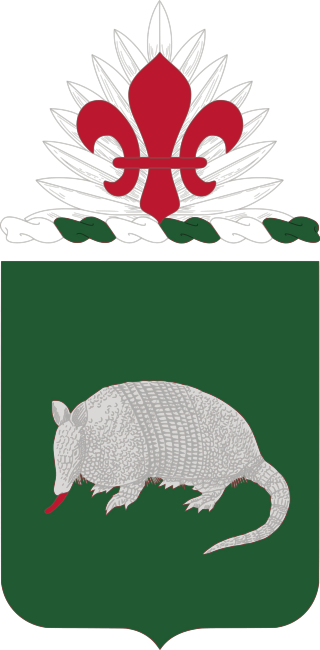
The 35th Armored Regiment is a regiment of the United States Army first established in 1941. The lineage of the regiment is carried on by the 1st Battalion 35th Armored Regiment, currently attached to the 2nd Brigade Combat Team, 1st Armored Division.

The 146th Field Artillery Regiment is a field artillery regiment of the Army National Guard first Constituted in 1886 as the 1st, and 2nd Regiments of Infantry.
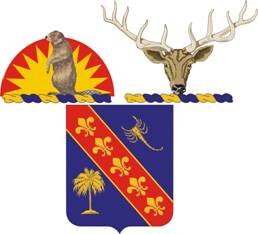
The 148th Field Artillery Regiment is a Field Artillery Branch regiment of the Army National Guard.
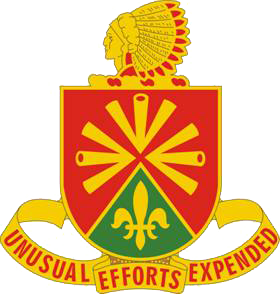
The 158th Field Artillery Regiment is a Field Artillery regiment of the Army National Guard.
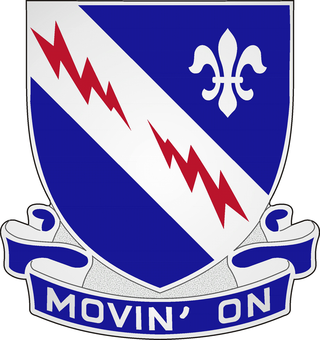
The 1st Battalion, 279th Infantry Regiment is headquartered in Sand Springs, Oklahoma. It is a part of the 45th Infantry Brigade Combat Team, Oklahoma Army National Guard.
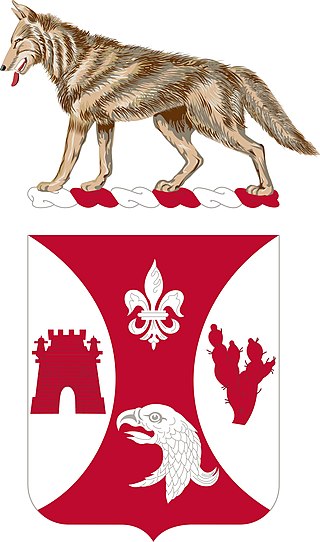
The 196th Infantry Regiment is an infantry regiment of the United States Army National Guard. It traces its lineage to units which have been both infantry and engineers.
